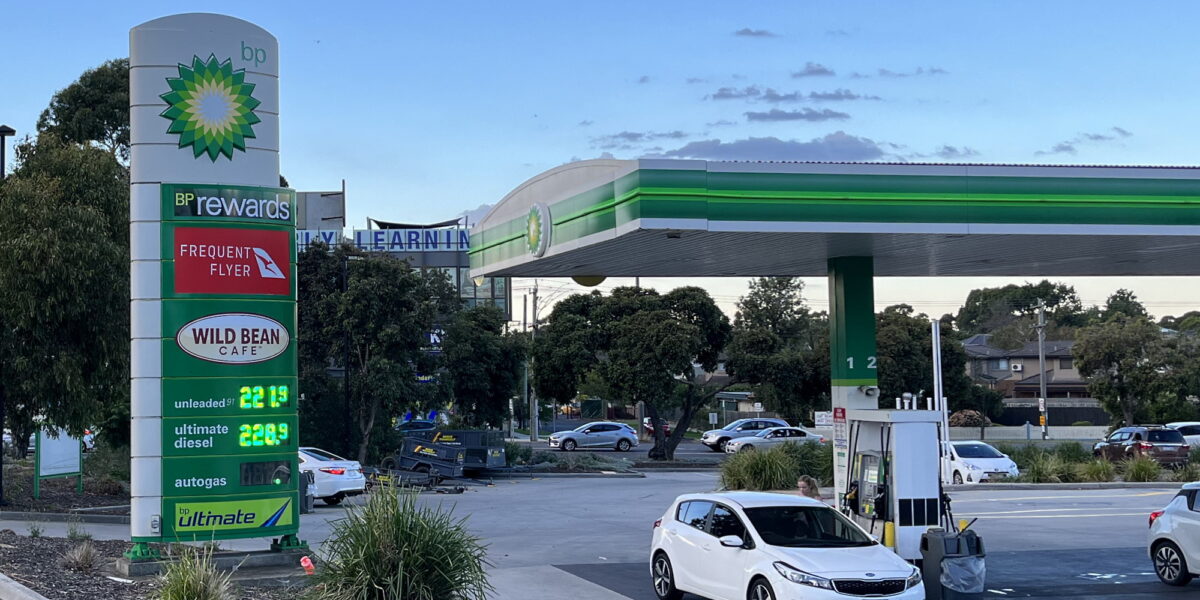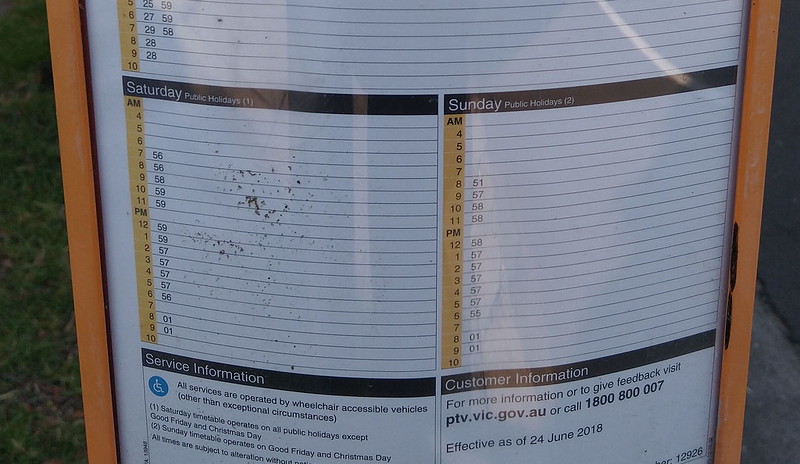Free public transport is back in the news this week. In the wake of high petrol prices, the Victorian Greens have proposed it to help provide relief and switch people onto public transport.
In recent weeks, New Zealand has halved its public transport fares for three months, and Tasmania has made theirs free for five weeks.
You can see why it’s attractive to politicians. It’s an instant fix, and is seen as providing help for those impacted by fuel costs.
Getting people out of cars onto PT is also good for easing traffic congestion and cutting emissions, which is vital for fighting climate change. It’s an important goal.
But do free fares actually achieve this? That’s doubtful.
It’s a service issue
The problem is that for the people most affected by high petrol prices, needing to drive to almost everywhere they go, public transport is not a viable option.
Middle and outer suburban and regional public transport is mostly notoriously poor, with slow, indirect, infrequent buses. It’s precisely why those people are driving everywhere.
Making it free won’t change that. The problem is the service quality.
We know this, because the Australian Bureau of Statistics asked people why they don’t use public transport:
- No service available at all 28.2%
- Convenience/comfort/privacy in private vehicle 26.8%
- No service available at right/convenient time 22.9%
- Travel time too long 18.6%
- Own vehicle needed before/during/after hours 8.3%
- Carry equipment/tools/passengers 7.8%
- Public transport services too far from home 5.2%
- Public transport is unreliable/too crowded 4.6%
- Company or employer’s vehicle needed during work/study hours 4.2%
- Other 3.9%
- Prefer to walk/cycle 3.3%
- Too close to work/study to use public transport 3.3%
- Reliable/convenient parking near/at place of work/study 2.9%
- Cost considerations 1.9%
- Concerned about personal safety 1.8%
(Source: ABS 4602.0.55.002, table 2.5 – responses for Victoria shown. Emphasis added.)
The data is a bit old now, and I haven’t found an updated version, but I wouldn’t expect much change from this.
There’s a good argument to be made that some fares (particularly for short trips and on V/Line) need to be made more affordable, but it’s not the main game.
Whether a ride on your local infrequent indirect bus is $3.10 or free, the main blocker isn’t the fare, it’s the fact that it’s not a time-competitive alternative to driving.
The revenue
Another myth is that fare revenue barely covers fare collection (eg ticketing systems).
This might be the case in some small low-patronised systems, but it’s not true in Victoria. Even though the cost of a big ticketing system is high – the new Myki contract is expected to continue to cost about $100m per year – the revenue is much higher.
For the year ended 30 June 2019, the total metropolitan and regional farebox revenue and non-farebox receipts … was $982,444,244
PTV Annual Report 2018-19
Revenue has dropped due to COVID-19, but with patronage last week at 63% of normal, is coming back fast.
So if you waive all the fares in a quest to satisfy the 1.9% of people who are avoiding the system because of cost, it’s costing you hundreds of millions of dollars a year. The Greens estimated $75 million/month, which is probably about right.
Imagine how many extra services that could fund – which would address the issues actually preventing people using the service?
(And you could still look for ways of relieving the cost for the people who need it, such as selective widening of concession fares).
The FTZ comparison
One observer thought that since the Free Tram Zone resulted in a patronage increase of 20-30%, the same would be true across the network.
I have a couple of concerns with that.
Firstly, the FTZ largely took trips that were previously on foot or bike. That’s not a positive outcome, and if replicated elsewhere, would not provide relief from petrol prices, cut traffic, or reduce emissions.
Secondly, I’m not sure the FTZ effect can be extrapolated across the network. The FTZ is specific to a very dense area, with lots of walking trips, where it’s a hassle to drive, and with streets where trams mostly run every few minutes. Of course it increased patronage.
The same can’t be said in the suburbs suffering from high petrol prices. The mostly infrequent bus services are unlikely to pick up the same growth.
The FTZ resulted in crowding on CBD trams, which has had to be addressed, meaning other improvements missed out. For instance it’s probably why the proposal to move tram route 12 to La Trobe Street never happened.
Free PT advocates will say the crowding should mean more resources are put into it. This is precisely why it’s a bad idea – it means more funding for the most PT-rich part of the network, while the infrequent mostly unusable suburban buses will miss out – they’ll never be so crowded that the government is compelled to upgrade them.
What can be done quickly?
Free PT is a popular idea in part because it can be done very quickly. But if it doesn’t work, what alternatives are there?
Government should be boosting services. Yes, that can take some time to organise, particularly if fleet expansion is needed, or for hiring and training specialised staff. So get on with it.
But meanwhile, start with the easy stuff: more bus drivers and maintenance staff, to get the bus fleet working harder.
It’s inexcusable that most routes drop to hourly in the evenings and on weekends, the latter in particular when there’s heavy traffic demand.
For example most bus services to places like Chadstone Shopping Centre are halved to hourly on weekends (the busiest days), affecting people getting to work in service jobs – and they are some of the worst affected by petrol prices.
In summary, as long as fares are affordable, whether people use public transport or not is almost always down to service quality, not having to pay.
It’s laudable to look for ways to help get people out of the traffic and provide relief from petrol prices. But waiving the fares won’t do this. The focus has to be improving the service.
- More reading: PTUA Myths: Making public transport free will encourage use and political support
- The ABS data is a reminder that transport is supply-led
- A previous blog of mine: Free PT schemes around the world
- It didn’t get as much attention, but The Greens also called for incentives to scrap old cars



8 replies on “Free PT? Still not the main game”
There was a similar version of that ABS survey in October 2011 for Victoria specifically that broke data down into Zone 1 and Zone 2 – same story, it’s about inconvenience and inadequacy of services in 90+% of cases, regardless of zone. On the flipside, those using PT mostly do it for convenience (e.g. workers travelling to CBD) with a significant minority (20%ish) who don’t have a choice, and maybe around 5% who say their main reason was PT was already cheaper than own transport (and that was higher in Zone 2). ABS cat 4602.2. Neither of those surveys have been repeated in recent years, I don’t think.
So while there will be some people who will use PT instead if it became free, why would you want to lose the not insignificant fare revenue from those quite happy to pay?
And on access, there’s a significant group who report they have can’t use any public transport – one in seven people with a disability – that’s about 130,000 Victorians. ABS Survey of Disability, Ageing and Carers 2018, which should be repeated later this year.
I understand the PTUAs’ long running opposition to free public transport and agree with most of the points above particularly about service frequency.
That said FREE PUBLIC TRANSPORT!!! might be marketing the catch cry to convince a section of users who have already driven and never considered it as an option to try it out. What better time to convince these people than when public transport has looser usage and less crowding. If my first train trip was taking the 8:15am Newport to City service in 2019 I’d go back to my car and never want to try it again.
Perhaps 1 or 2 months free might be worth the loss of revenue to draw in first time users and potentially keep the, once fare collection begins again.
@Steve, thanks – really good info.
For anybody looking for it, here’s a link: https://www.abs.gov.au/ausstats/[email protected]/Lookup/4602.2Chapter500October%202011
@Stirlingthorley, you make a good point – noting that promotion isn’t the same as petrol price relief (though they are related).
PTV did have a go at promotion to encourage people back onto PT, though in retrospect it was perhaps mistimed. (Hard to predict good timing though given COVID lockdowns throughout 2020 and 2021.)
And in fact I notice they’ve just released some new videos on this topic:
https://www.ptv.vic.gov.au/more/travelling-on-the-network/travelling-safely/back-on-board/
Not sure if these are getting widely shared.
Many people are still astounded when I mention the Trains are free before 7(:15) am. Barely promoted/publicized peak spreading incentive, that does not even come up in the PTV journey planner.
How about maybe publicizing the peak spreading bonuses better and add further incentives for people who can do counterpeak commuting?
Agree with needing better bus frequencies in general. Also penalize bus companies that doesn’t have their departure schedules “talk” to the train arrival schedules, and particularly if their drivers don’t wait for a train that’s delayed for a few mins. And straighten more of those goddamn routes too.
If any service isn’t being partly paid for by the public how can we continue to argue for more money to be put into it by teh govt. Regardless of how popular it is, it needs some level of self funding. At some stage when times are tough and deficits overwhelming, cuts will happen. This is not where we want PT to be.
People’s circumstances change all of the time. This year you are in a job that requires you to travel by car, next year your circumstances change and the job is closer with transport being convenient.
[…] Near-free PT is similar to free PT, with similar benefits and problems, which I went into detail on in this blog post in March. […]
[…] as long as fares are affordable, the priority must be service improvements – and wiping out fare revenue jeopardises that. So the Greens and Coalition proposals for […]